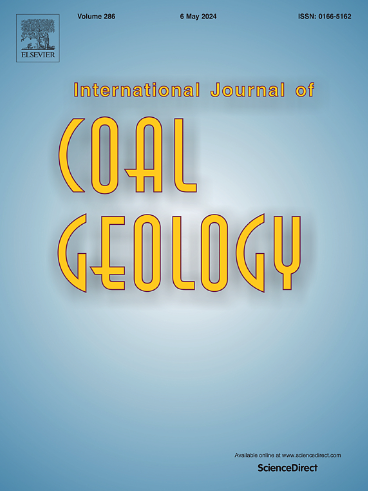Enhancing coal seam gas recovery through greenzyme-induced relative permeability optimisation: Helium-driven core flooding experiments and field-scale production simulations
IF 5.7
2区 工程技术
Q2 ENERGY & FUELS
引用次数: 0
Abstract
Coal seam gas (CSG) is an unconventional gas resource in the global energy supply. A key factor in predicting and evaluating methane production in coalbeds is coal relative permeability. This study explores the effects of an enzyme-based surfactant, GreenZyme (GZ), on coal relative permeability through drainage unsteady-state core flooding experiments. Initial measurements of interfacial tension (IFT) between helium and GZ solutions at various concentrations demonstrate a decrease in IFT from approximately 70 to 45 as GZ concentration increases, with 1.2 wt% identified as the critical concentration for solution preparation. Helium was employed as a substitute for methane to eliminate sorption effects and focus on liquid–gas phase interactions. The relative permeability curves for gas and water were derived using the Johnson–Bossler–Naumann (JBN) method. The results show that GZ improves the displacement of water by approximately 5%, with relative permeability curves for both water and gas moving leftward and upward in the presence of GZ. This enhancement is attributed to the reduction in IFT between the water and gas phases. To assess the impact at the field scale, an Eclipse-developed CSG production model incorporating experimental data was developed. Simulation results show that while the gas production rate based on the original relative permeability curves is initially higher during the first 0.28 years, the rate for the GZ-enhanced case surpasses it for the remainder of the production period. These findings provide valuable insights into the influence of GZ on coal relative permeability and demonstrate its potential to enhance CSG recovery at the field scale.
通过绿酶诱导的相对渗透率优化提高煤层气采收率:氦驱动岩心驱油实验和现场规模生产模拟
煤层气是全球能源供应中的一种非常规天然气资源。煤的相对渗透率是预测和评价煤层气产量的关键因素。本研究通过排水非稳态岩心驱油实验,探讨了酶基表面活性剂GreenZyme (GZ)对煤相对渗透率的影响。不同浓度的氦气和GZ溶液之间的界面张力(IFT)的初步测量表明,随着GZ浓度的增加,IFT从大约70 mN/m下降到45 mN/m,其中1.2 wt%被确定为溶液制备的临界浓度。氦气被用作甲烷的替代品,以消除吸附效应,并专注于液气相互作用。采用Johnson-Bossler-Naumann (JBN)方法推导了气、水相对渗透率曲线。结果表明:GZ对水驱替的改善作用约为5%,且在GZ作用下,水、气的相对渗透率曲线均呈左移和上移趋势;这种增强归因于水和气相之间IFT的减少。为了评估油田规模的影响,开发了一个eclipse开发的CSG生产模型,并结合了实验数据。模拟结果表明,虽然基于原始相对渗透率曲线的产气量在前0.28年初始较高,但在剩余的生产期内,gz增强情况的产气量都超过了它。这些发现为GZ对煤相对渗透率的影响提供了有价值的见解,并证明了它在现场规模上提高CSG采收率的潜力。
本文章由计算机程序翻译,如有差异,请以英文原文为准。
求助全文
约1分钟内获得全文
求助全文
来源期刊

International Journal of Coal Geology
工程技术-地球科学综合
CiteScore
11.00
自引率
14.30%
发文量
145
审稿时长
38 days
期刊介绍:
The International Journal of Coal Geology deals with fundamental and applied aspects of the geology and petrology of coal, oil/gas source rocks and shale gas resources. The journal aims to advance the exploration, exploitation and utilization of these resources, and to stimulate environmental awareness as well as advancement of engineering for effective resource management.
 求助内容:
求助内容: 应助结果提醒方式:
应助结果提醒方式:


